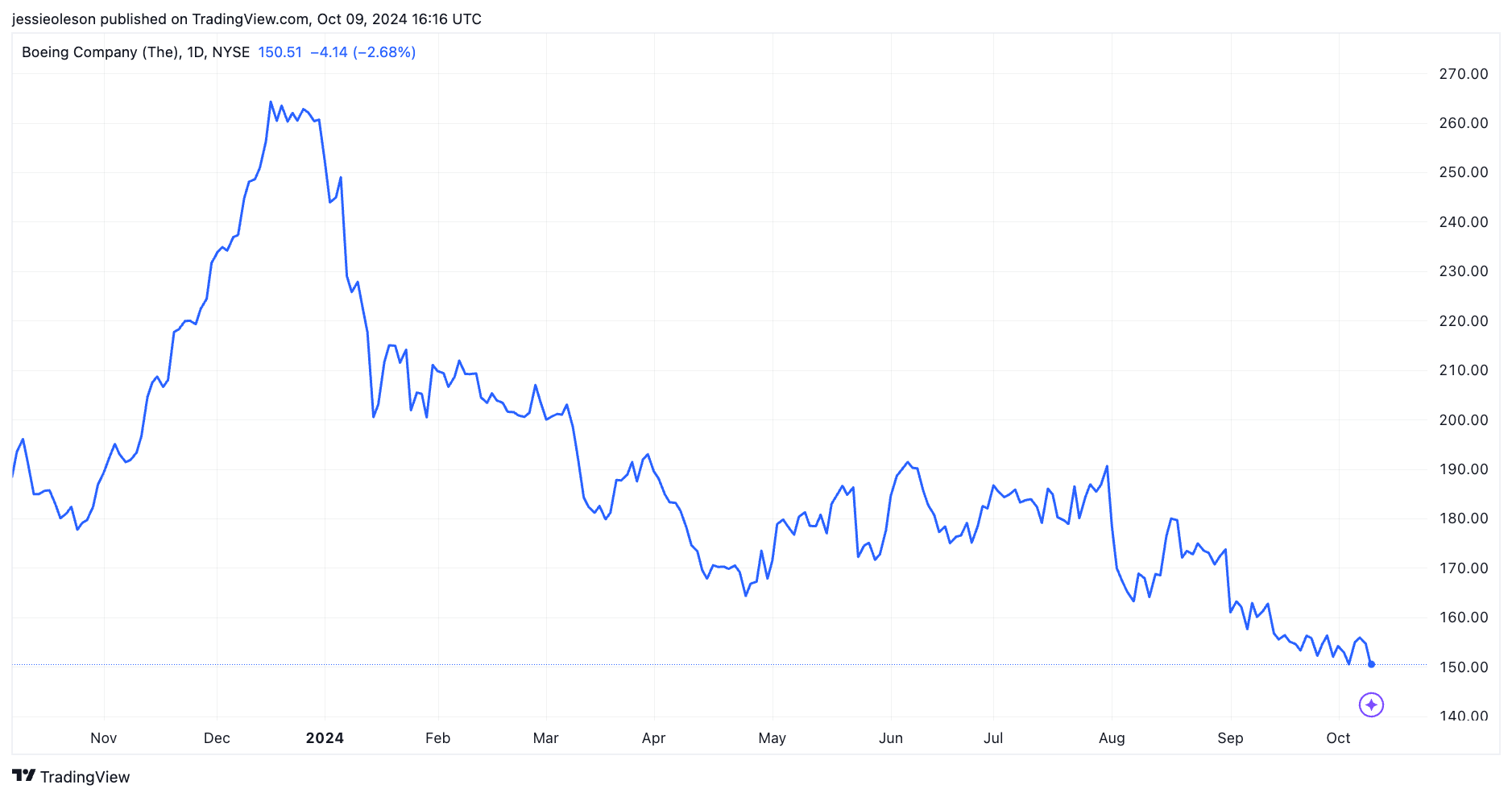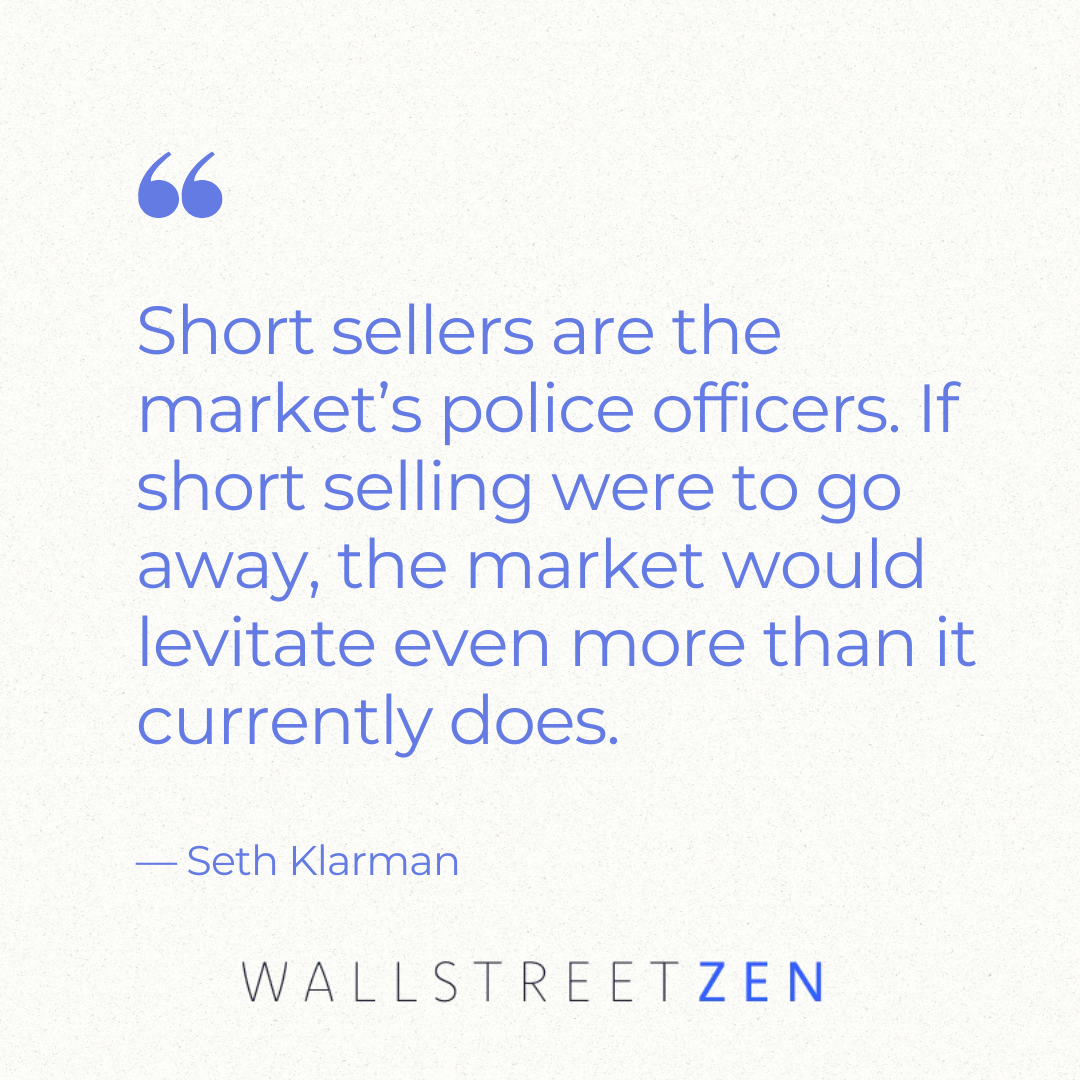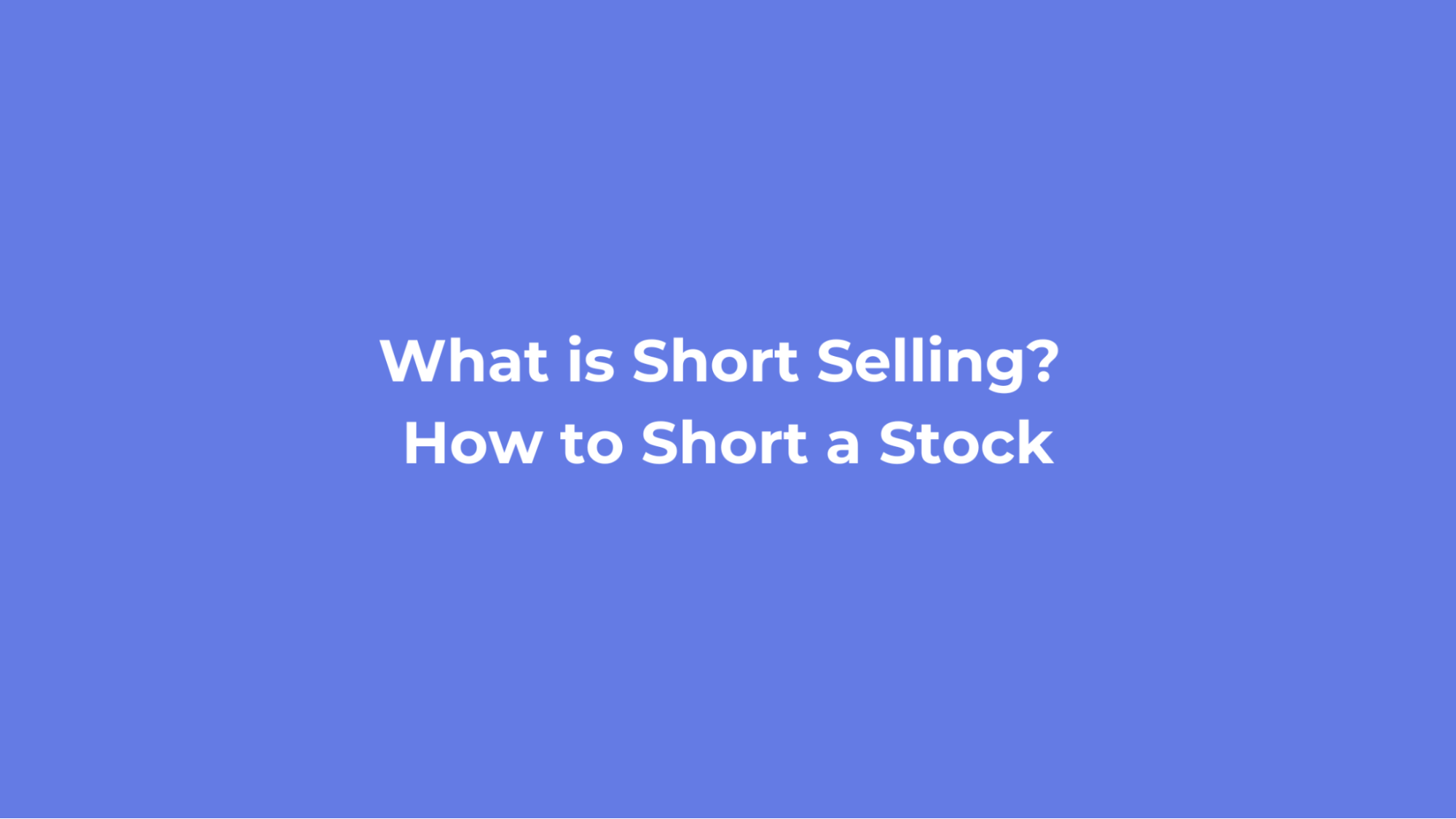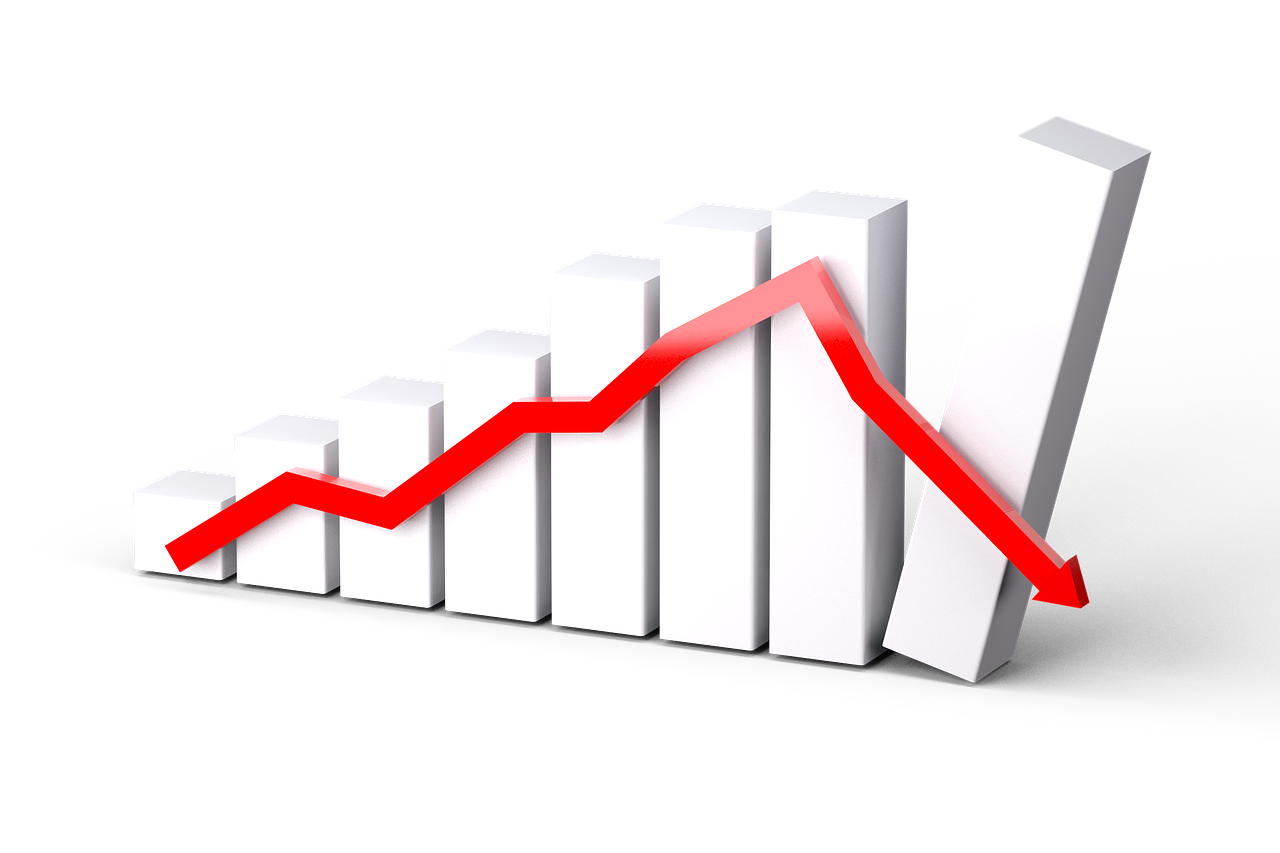Short selling takes the age-old stock market rule — “buy low, sell high” — and turns it on its head.
With short selling, you attempt to profit when stock prices go down.
It might seem like some crazy new idea, but it’s not. Short selling has been actively used in the U.S. markets for over a century.
Want to learn how to short a stock and potentially make money when stock prices go down? In this post, I’ll explain it all — What is short selling a stock? How does it work? I’ll also share some key considerations before you get started with short selling.
The best broker for short selling…
TradeStation is a top broker for short selling in 2025.
Unlike other brokerages, TradeStation was built by traders, not software engineers with design mockups from business executives. And it shows.
TradeStation is ideal for shorting thanks to competitive margin rates and powerful tools, including customizable charts and real-time market data, which are essential for short sellers who rely on precise timing.
Additionally, TradeStation provides access to an extensive list of stocks available for shorting, including harder-to-borrow stocks, making it a solid option for short sellers.
What Is Short Selling a Stock?
Short selling is a style of trading where you attempt to profit from falling stock prices. As a short seller, you seek out stocks that you think will go down in price, and attempt to profit from the price decline.
That’s the short (pun intended) explanation. But how does it actually work? Let’s dig in to how to short a stock.
How Does Short Selling Work?
Why on earth would you buy a stock hoping it will go down in price? Actually, with short selling, the process doesn’t start with buying — it starts with borrowing.
Let me explain.
As a short seller, you don’t buy shares from your broker — you borrow them. You then sell those borrowed shares, taking a negative position. So, for instance, if you borrowed 1,000 shares, your account will show a balance of -1000 shares.
Related reading: How Do Investors Borrow Shares? How Borrowing Stock Works
To complete the cycle of short selling, you then buy back the shares and give them back to your broker.
In an ideal world, the scenario unfolds like so: After you have sold those shares, they drop dramatically in value, and you buy them back at the lower price. Your profit is the difference between the higher price (at which you sold) and the lower price (at which you bought). For instance, if a stock goes down precipitously, as Boeing did in late 2023 to early 2024, when it plunged from around $260 to under $200 in a matter of days, it could present a short selling opportunity.

Of course, the scenario doesn’t always unfold that way. Whether the stock price goes up or down, you’re still obligated to buy those shares back before you hand them back to the broker.
So if the price goes up dramatically, you could find yourself in a pretty big hole, financially speaking. (We’ll talk about that more in a few minutes, but if you want to fast forward, scroll to the “Short Selling Risks” section below.)
So you’re still buying and selling stock shares, but the process works a bit differently than “traditional” buying and selling.
Is Short Selling Legal?
Yes, short selling is legal, and has been used in the U.S. markets for over a century. But the very fact that so many people are curious about its legality means we should take a few minutes to explain, don’t you think?
Among some circles, short selling has a reputation for being shady. Short sellers are sometimes blamed for contributing to market volatility or exacerbating price drops. Viewed from this lens, short selling can seem unethical or manipulative.
However, the truth of the matter is that short selling actually does play a role in overall market efficiency. For one, it lets investors to hedge risk. For another, it enables price discovery — a fancy way of describing how the market determines the fair value of an asset based on supply and demand.
Famed investor Seth Klarman expresses it more eloquently: “Short sellers are the market’s police officers. If short selling were to go away, the market would levitate even more than it currently does.”
Klarman is referring to the critical role that short sellers play in maintaining market efficiency and preventing overvaluation.

Another contributor to short selling’s infamy? A little thing called naked short selling. This is a practice where investors sell stock shares without borrowing them. This can create issues in share inventory, which can lead to market distortion.
Naked short selling is illegal in many markets due to the potential for market manipulation and instability. However, there are some exceptions.
For instance, market makers, or financial institutions that enable smoother trading in the overall markets — may be permitted to engage in naked short selling in certain situations. However, this is uncommon.
The bottom line? When executed properly, short selling is not illegal, nor is it unethical.
What Kind of Stocks Should Investors Short?
Finding the right stocks to short requires thorough analysis and patience.
However, there are common traits that experienced short sellers often target:
- Stocks with Unjustified Price Increases: When a stock’s price goes up for no good reason, it often comes back down. This could be as a result of hype, or it could be a “pump and dump” scheme where a stock’s price is driven up by promoters without an underlying catalyst.
- Momentum-Driven Stocks: Some stocks are pushed up in price due to heavy buying from momentum investors. These stocks can be tricky to assess accurately and may eventually see a decline when the momentum fades.
- Sector Sympathy Plays: When a stock in a particular sector rises, others in the same industry might also go up simply due to association. These “sympathy plays” often have less staying power than the “sector leader” that kicked off the sympathy plays, and if they don’t have a fundamental catalyst themselves, these sympathy plays tend to drop after the initial hype wears off.
- Companies Riding Trends but With Poor Financials: Firms that chase market trends but have weak financial health can be vulnerable. They may not sustain long-term growth, making them potential candidates for short selling. (As a side note, WallStreetZen allows you to easily evaluate a company’s financial health along with dozens of other due diligence checks.)
The above characteristics can alert short sellers that a stock may be overvalued or that its price action might be unsustainable, priming them for future declines.
Short Selling Risks
Short selling is far riskier than “going long” with a stock.
#1 is the biggest risk by far, but all of the below are worth knowing about:
- Unlimited Loss Potential: Unlike buying stocks, where the maximum loss is the initial investment, short sellers face theoretically unlimited losses if the stock price continues to rise.
- Short Squeezes: If many short sellers have bet against a stock and it rises rapidly, they may be forced to buy back shares at higher prices, driving the stock even higher and creating large losses. For instance, GameStop’s infamous price increase from $4 to over $400 in January 2021 was a massive short squeeze. As the stock surged, short sellers were forced to cover their positions, leading to huge losses. Hedge fund Melvin Capital alone reportedly lost over $6 billion within just a few weeks.
- Timing Risk: Even if a company is fundamentally weak, it can take time for the stock to fall, and short sellers may need to maintain their positions longer than expected, increasing costs and risks.
- Borrowing Costs: To short a stock, investors must borrow shares, and this comes with fees, especially if the stock is hard to borrow. These costs can add up over time.
- Market Sentiment and Intervention: Short sellers can be vulnerable to sudden positive market sentiment or unexpected news catalysts, which can push stock prices up quickly.
Important Considerations When Short Selling
In addition to understanding the risks associated with short selling, here are a few more important things to know:
- Not all brokers support short selling: Before engaging in short selling, confirm whether your broker provides this service. TradeStation is one of our top overall picks, but we also recommend moomoo, TradeZero, and several other brokers — for a full list, check out this post: 10 Best Brokers for Short Selling.
- Shares may not always be available: Even if your broker offers short selling, there’s no guarantee that shares will be available to borrow when you need them. TradeStation is better than most about this.
- Short selling is typically a short-term strategy: Due to the higher risk associated with short selling, it’s generally used for short-term trades rather than long-term investments.
- More common in bear markets: Short selling opportunities are often more abundant in bear markets, where there’s greater pessimism about stock prices.
Tools For Short Selling Success
If you want to become a short seller, you’ll need a few things.
1. Practice
Paper trading is one of the best way to “try before you buy” (or borrow, in this case.) In case you’re not familiar, paper trading is virtual trading, where you can execute trades with virtual funds.
Where’s the fun in that? Well, if you’re new to a trading technique — especially one as risky as short selling — it can be helpful to familiarize yourself with the process of executing trades and test a few trades virtually before you start putting real money on the line.
There are many paper trading programs out there, but I strongly recommend using one offered through the broker you choose, as it will best familiarize you with the execution process on your chosen platform.
Related reading: What’s the Best Stock Market Simulator?
2. A solid broker
As noted above, not all brokers offer short selling. But just because a broker offers short selling doesn’t mean they’re the best choice. (FWIW, we like TradeStation.)
Be sure to weigh the pros and cons of any broker you’re considering to best decide if they’re aligned with your goals and account needs as a short seller.
3. Charting
Many short sellers rely on technical analysis and chart patterns to find high-quality short plays and to plan out entry and exit points. So excellent charts are a must.
TradeStation can help you with all of the above.
First off, TradeStation offers access to paper trading after you set up and fund an account with any amount. TradeStation is ideal for shorting thanks to competitive margin rates and powerful tools, including customizable charts and real-time market data, which are essential for short sellers who rely on precise timing.
Additionally, TradeStation provides access to an extensive list of stocks available for shorting, including harder-to-borrow stocks, making it a solid option for short sellers.
The Bottom Line: What is Short Selling?
Hopefully, you’re feeling much better informed about short selling now than you were when you started reading.
If there’s one key takeaway I want you to internalize, it’s that short selling is risky, and it pays to invest in knowledge and high-quality tools (brokerage, paper trading platform, charting software) before you get started.
I think TradeStation is a great tool for short sellers as it can help with all of the above — but remember, it’s your journey. Always do your due diligence before making investment decisions.
FAQs:
What is short selling and how does it work?
Short selling is a trading strategy where an investor borrows shares of a stock and sells them, hoping to buy them back later at a lower price to make a profit.
If the stock price rises instead of falling, the investor faces potentially unlimited losses, as they must still repurchase the shares to return them.
What is an example of a short sell?
A famous example of short selling is the case of Michael Burry and his bet against the U.S. housing market in 2007, which was popularized in the book and movie The Big Short.
Burry, an investor and hedge fund manager, identified that the housing market was propped up by risky subprime mortgages and bet against mortgage-backed securities by shorting them. When the housing bubble burst,
Burry's short position paid off massively, earning his investors and himself significant profits.
Why is short selling illegal?
Short selling is not illegal, but it does have a reputation for being shady. Short sellers are sometimes blamed for contributing to market volatility or exascerbating price drops. Viewed from this lens, short selling can seem unethical or manipulative.
Why is short selling allowed? Because it allows investors to hedge risk and enables price discovery — the process through which the market determines the fair value of an asset based on supply and demand.
However, the practice of naked short selling, or selling shares of a stock without borrowing them first, is illegal in most cases.
How profitable is short selling?
Short selling has the potential to be extremely profitable, as evidenced by investors like Michael Burry and John Paulson, who made billions of dollars shorting subprime mortgages during the 2007-2008 financial crisis.
However, short selling can also lead to massive losses, as evidenced by Melvin Capital’s $6 billion loss during the 2021 during the GameStop short squeeze.
What is naked short selling?
Naked short selling is a practice where an investor sells shares of a stock without first borrowing or ensuring the availability of the shares to borrow.
In traditional short selling, the seller must borrow the shares before selling them, but with naked short selling, this borrowing process is skipped. This creates a situation where more shares are sold than actually exist, which can distort the market.
Naked short selling is considered illegal in many markets because it can artificially drive down a stock’s price, potentially leading to manipulation and market instability.
However, there are some exceptions where it may be allowed under certain regulations.
Where to Invest $1,000 Right Now?
Did you know that stocks rated as "Buy" by the Top Analysts in WallStreetZen's database beat the S&P500 by 98.4% last year?
Our July report reveals the 3 "Strong Buy" stocks that market-beating analysts predict will outperform over the next year.







